Resources
About Us
Kenya IVD Market By Offering, Technology (Immunoassay, Point of Care, Molecular Diagnostics, Coagulation), Application (Infectious Diseases, Diabetes, Oncology), Diagnostic Approach (Lab, OTC, PoC), End User - Forecast to 2032
Report ID: MRHC - 1041451 Pages: 148 Feb-2025 Formats*: PDF Category: Healthcare Delivery: 2 to 4 Hours Download Free Sample ReportThe growth of the Kenya IVD market is driven by high prevalence of infectious diseases, government initiatives supporting healthcare sector, and increasing demand for quality diagnostics. Furthermore, increasing adoption of self-testing kits, emerging technologies, shift towards personalized medicine, and integration of digital health solutions are expected to generate growth opportunities for the stakeholders in this market.
Kenya faces a significant burden of infectious diseases, which continues to drive the growth of its in vitro diagnostics (IVD) market. These diseases include HIV/AIDS, tuberculosis (TB), malaria, and other endemic conditions like respiratory infections and neglected tropical diseases. The high prevalence of these illnesses has necessitated developing and deploying advanced diagnostic solutions to address healthcare challenges effectively.
Kenya is among the countries with the highest HIV prevalence rates in sub-Saharan Africa, with approximately 1.4 million people living with the disease. The government has prioritized HIV testing as part of its national health strategy, making diagnostic tools like rapid antibody tests, nucleic acidbased tests, and point-of-care solutions essential. Integrated diagnostic platforms, which can detect HIV alongside other infections, are also in high demand, supporting the IVD market's growth.
Tuberculosis is another significant public health concern, with a high co-infection rate with HIV. Kenya ranks among the highest TB burden countries globally. This has led to the adoption of advanced molecular diagnostic tools like GeneXpert, which can detect both TB and drug-resistant strains, addressing the critical need for timely and accurate diagnosis. The inclusion of such diagnostics in national TB control programs has bolstered the IVD market.
Therefore, the substantial burden of infectious diseases in Kenya, including HIV/AIDS, tuberculosis, malaria, and occasional outbreaks of other infectious diseases, continues to drive the demand for advanced in vitro diagnostic (IVD) solutions.
The increasing healthcare access and awareness are driving the need for accurate and efficient diagnostic tools. This becomes more crucial in managing a wide range of diseases, from infectious conditions like HIV and malaria to chronic diseases such as diabetes and hypertension. This demand is driven by factors such as the growing burden of non-communicable diseases, an expanding middle class, and a shift towards preventative healthcare.
Additionally, the government’s efforts to improve healthcare infrastructure and enhance diagnostic capabilities at both public and private healthcare facilities further fuel the demand for advanced IVD technologies. With a growing emphasis on early disease detection and personalized treatment, the market for IVD devices in Kenya is expected to experience robust growth, as both healthcare providers and patients seek more accurate, cost-effective, and timely diagnostic solutions.
Personalized medicine involves tailoring medical treatment to the individual characteristics of each patient, such as their genetic makeup, lifestyle, and environment. This approach allows for more targeted and effective treatments, reducing the trial-and-error process and improving patient outcomes. In Kenya, the growing awareness of the benefits of personalized healthcare, coupled with advancements in genomics and molecular diagnostics, is creating a demand for personalized diagnostic tools. As healthcare professionals increasingly seek to understand the genetic basis of diseases like cancer, diabetes, and cardiovascular conditions, there is a rising need for precision diagnostic tests that can identify genetic markers and predict disease risk.
This shift aligns with global trends toward individualized care, and Kenya’s expanding healthcare infrastructure presents an opportunity for IVD manufacturers to develop and introduce personalized diagnostic products tailored to the local population. By incorporating genetic and molecular testing into routine healthcare, Kenya can improve treatment accuracy and reduce healthcare costs, making personalized medicine a transformative force in the country’s healthcare system. Soon, personalized medicine is set to become a key part of Kenya’s healthcare system. Despite its current limited availability, advancements in genomics and diagnostics will drive its wider implementation, improving treatment outcomes and positioning Kenya as a leader in personalized healthcare.
Based on offering, the Kenya IVD Market is segmented into reagents & kits, instruments, and software & services. In 2025, the reagents & kits segment is expected to account for the largest share of 83.4% of the Kenya IVD market. The large market share of this segment is attributed to the recurring use of assays & kits in the detection of various chronic diseases, the commercial availability of a diverse range of reagents & consumables for the diagnosis of various diseases, and the increase in the volume of testing for infectious diseases such as COVID-19 and influenza. Also, the factors such as increased awareness of early diagnosis, Kenyan government’s investments in healthcare infrastructure, technological advancements, and the expansion of private healthcare services support the large share of this segment.
Moreover, this segment is projected to register the highest CAGR of 3.4% during the forecast period.
Based on technology, the Kenya IVD market is segmented into immunoassay/immunochemistry, whole blood glucose monitoring, molecular diagnostics, point-of-care diagnostics, biochemistry/clinical chemistry, microbiology, hematology, coagulation & hemostasis, and other IVD technologies. In 2025, the immunoassay/immunochemistry segment is expected to account for the largest share of 34.2% of the Kenya IVD market. The segment’s large share is attributed to the benefits of immunoassay technologies, such as efficient, convenient, and accurate research tools for the detection and quantitation of targets, continuous development of new biomarkers, and cost-effectiveness, coupled with the growing adoption of automated platforms for ELISA.
However, the whole blood glucose monitoring segment is projected to register the highest CAGR during the forecast period. The growing prevalence of diabetes and rising awareness regarding the availability of self-testing kits for glucose monitoring are major factors driving the growth of this segment.
Based on end user, in 2025, the diagnostic laboratories segment is expected to account for the largest share of the Kenya IVD market. Diagnostic laboratories are a part of the healthcare system that provides testing services to hospitals, clinics, and other healthcare institutes. Diagnostic laboratories play a crucial role in healthcare, providing accurate diagnostic results for better disease management. Diagnostic laboratories process more samples in less time due to well-equipped systems and the presence of skilled professionals. These laboratories are private or public-owned and perform different kinds of tests on various samples to detect diseases. They receive samples from various healthcare centers, including hospitals and clinics. As of 2023, Kenya has over 200 accredited medical laboratories, with the majority concentrated in urban areas. Public laboratories, such as those under the Kenya Medical Research Institute (KEMRI) and the National Public Health Laboratories, serve as the backbone for disease surveillance and outbreak response. These factors contribute to the largest share of the segment.
The report includes a competitive landscape based on an extensive assessment of the Component offerings, geographic presence, and key strategic developments of leading Market players (2021–2024). The key players operating in the Kenya IVD Market are Abbott Laboratories (U.S.), Becton, Dickinson and Company (U.S.), bioMérieux SA (France), Danaher Corporation (U.S.), F. Hoffmann-La Roche Ltd (Switzerland), QIAGEN N.V. (Netherlands), Siemens Healthineers AG (Germany), Thermo Fisher Scientific Inc. (U.S.), Bio-Rad Laboratories, Inc., (U.S.), Illumina, Inc. (U.S.), Shenzhen Mindray Bio-Medical Electronics Co., Ltd (China), The Kenya Medical Research Institute (KEMRI), Biovet Ltd., and Laboratories & Allied Ltd.
|
Particulars |
Details |
|
Number of Pages |
148 |
|
Format |
|
|
Forecast Period |
2025-2032 |
|
Base Year |
2024 |
|
CAGR |
3.2% |
|
Market Size in 2025 |
$55.23 Million |
|
Market Size in 2032 |
$68.66 Million |
|
Segments Covered |
By Offering
By Technology
By Application
By Diagnostic Approach
By End User
|
|
Key Companies Profiled |
Abbott Laboratories (U.S.), Becton, Dickinson and Company (U.S.), bioMérieux SA (France), Danaher Corporation (U.S.), F. Hoffmann-La Roche Ltd (Switzerland), QIAGEN N.V. (Netherlands), Siemens Healthineers AG (Germany), Thermo Fisher Scientific Inc. (U.S.), Bio-Rad Laboratories, Inc., (U.S.), Illumina, Inc. (U.S.), Shenzhen Mindray Bio-Medical Electronics Co., Ltd (China), The Kenya Medical Research Institute (KEMRI), Biovet Ltd., and Laboratories & Allied Ltd. |
The Kenya IVD Market size was valued at $53.43 million in 2024.
The market is projected to grow from $55.23 million in 2025 to $68.66 million by 2032.
The Kenya IVD Market analysis indicates a significant growth to reach $68.66 million by 2032, at a compound annual growth rate (CAGR) of 3.2% from 2025 to 2032.
The key players operating in the Kenya IVD Market are Abbott Laboratories (U.S.), Becton, Dickinson and Company (U.S.), bioMérieux SA (France), Danaher Corporation (U.S.), F. Hoffmann-La Roche Ltd (Switzerland), QIAGEN N.V. (Netherlands), Siemens Healthineers AG (Germany), Thermo Fisher Scientific Inc. (U.S.), Bio-Rad Laboratories, Inc., (U.S.), Illumina, Inc. (U.S.), Shenzhen Mindray Bio-Medical Electronics Co., Ltd (China), The Kenya Medical Research Institute (KEMRI), Biovet Ltd., and Laboratories & Allied Ltd.
By offering, the reagents & kits segment is forecasted to hold the largest market share;
By technology, the immunoassay/immunochemistry segment is forecasted to hold the largest market share
By application, the infectious diseases segment is forecasted to hold the largest market share
By diagnostic approach, the laboratory testing segment is forecasted to hold the largest market share
By end user, the diagnostic laboratories segment is forecasted to hold the largest market share.
The primary drivers of Kenya IVD Market Growth include high prevalence of infectious diseases, government initiatives supporting healthcare sector, and increasing demand for quality diagnostics.


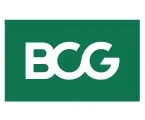
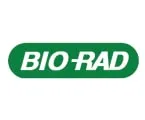


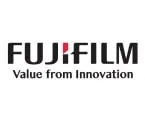
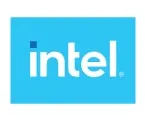
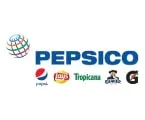
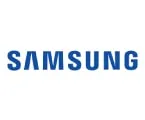


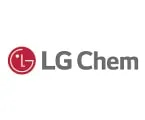

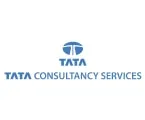
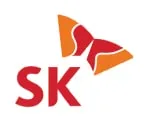
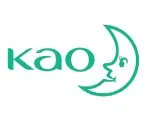
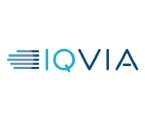
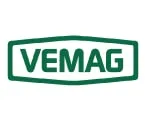
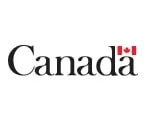

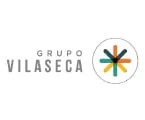


Published Date: Apr-2025
Published Date: Feb-2025
Published Date: Jan-2025
Published Date: Jan-2025
Published Date: Oct-2024
Please enter your corporate email id here to view sample report.
Subscribe to get the latest industry updates